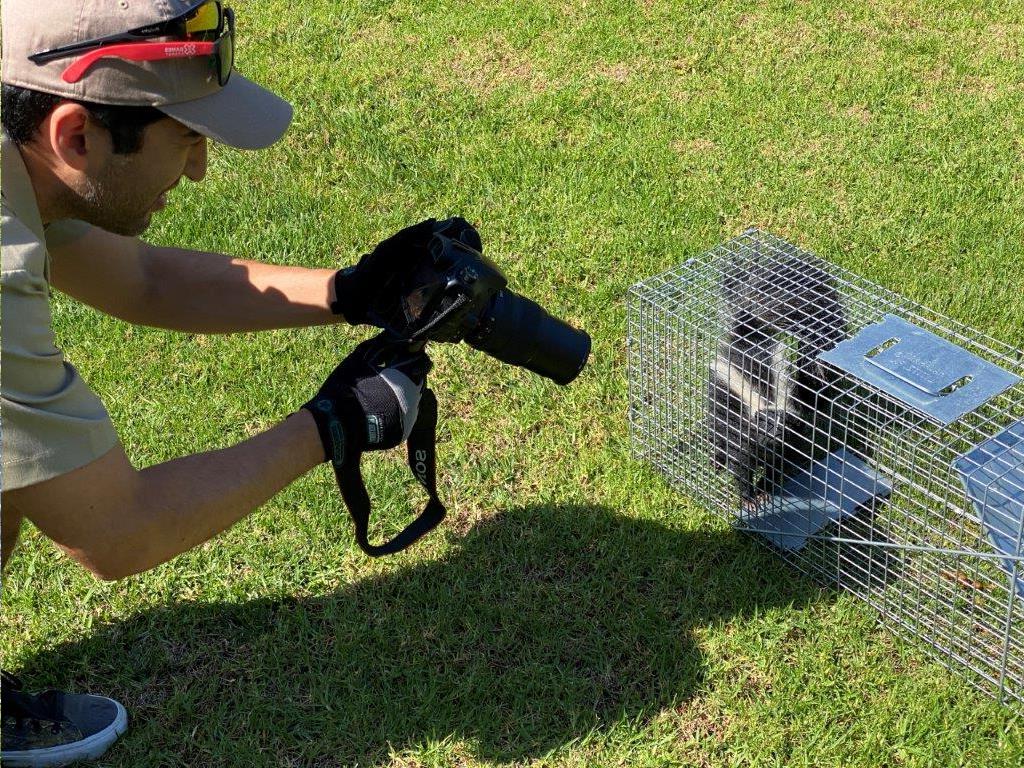
Skunks usually live a solitary life and forage alone. They like being alone because of their defense mechanism of spraying. Unlike other animals that move about in packs, skunks generally don’t need the strength in numbers as it only takes one spray, unlike other animals who will bite, charge, and claw their opponents together. This is kind of good news, especially if you’re worried about them living under your porch or in your garage. Striped skunks are one of the most common species of skunks, and they can be found practically anywhere in the United States. These creatures have small and stumpy legs that are well-muscled, really long front claws for digging and burrowing, and a short, pointed snout. Skunks have black eyes and small heads, and they will have their signature white stripe running along their backs up to their long and pillow-like tails. The size of a skunk is usually around 50 to 80 cm long, and they weigh anywhere from .50 kg for spotted skunks to 8.2 kg for hog-nosed skunks.
Skunk History 101
Skunks once belonged to a subfamily of the weasel, but they are now under their own family which is Mephitidae. Mephitidae comes from the Latin word “mephitis”, which means “bad odor”, accurately placing the skunk and the stink badger in a family that they really belong to. The stink badger was also once placed in another family, the badger subfamily. However, they are now under their aptly-named family, where they belong.
There are 12 species of skunks, and they are divided into 4 genera. However, in the United States, only 4 species are commonly spotted. These furry species all reach around 19 inches in length and weigh 15 lbs. The longest of their tails can even add a whopping 15 inches to their total length. Smaller species of skunks can be around 7 inches long with a 5-inch tail and just weigh 7 lbs.
The American hog-nosed skunk is the biggest species of skunks, and they can grow to over 30 inches in length. Like the name suggests, this species of skunk can commonly be found in North and South America. All skunk species are omnivores, but their favorite food is meat. They can also survive off plants, insects, worms, larvae, and other small creatures that they are able to catch. Their relatives, the stink badgers, are commonly found in Southeast Asia, namely the Philippines and Indonesia.
Common Species of Skunks in the United States
Striped Skunk (Mephitis mephitis)
This species is the most common type of skunk that you will see in North America, and they are the classic depiction of skunks in movies and cartoons. They have a white stripe or two running along their backs, and of course, their notorious spray defense mechanism. They have few natural predators, so they can live in a lot of places with ease. Striped skunks are also very good survivors who can adapt to their surroundings, including living in urban places as much as rural ones. The striped skunk is an omnivore, although they can handle anything that is even remotely edible, adding to their extreme adaptability and survival skills.
Eastern Spotted Skunk (Spilogale putorius)
The eastern spotted skunk also lives in a lot of areas in the United States. Oddly enough, as their name suggests, this species of skunks don’t have a continuous white stripe running along their backs but rather, white spots or irregular and broken stripes. Their tails are also usually solid white. Like striped skunks, the purpose of their oddly colored bright white tail is to announce where their deadliest weapon is.
Hooded Skunk (Mephitis macroura)
The hooded skunk typically lives in the Midwest and the southwest. They have a much longer tail than the other skunk species, and they usually have a predominantly white back with a black underside, giving the appearance of a hood, leading to their name. These skunks are nocturnal, an ironic habit since they are the species that can be most seen at night, due to their predominantly white fur.
Hog-nosed Skunk (Conepatus leuconotus)
Hog-nosed skunks usually live in the northwest and southwest. Their name comes from their appearance, which includes a long snout that is akin to that of a pig’s. Much like the hooded skunk, their entire backside and their tail is white, while their sides and underbellies are black. They are also the largest species of skunks and can grow up to 8.2 kg.
Go back to the Delaware County wildlife removal home page.